
I was sitting in a bar just 45 minutes before the start of my race last Sunday as most people tend to do in Spain. Sitting to my right was Mari-Carmen, blowing the steam from the surface of her coffee. Turning to me, she asked about my zero drop shoes. She wanted to buy a pair but had heard stories from her friends about runners getting injured when making the switch, yet I was uninjured more than 500 days into a run streak.
How to transition to zero drop running shoes? The process of transitioning to zero drop shoes must be done gradually over a period of months or even years to avoid undue strain on muscles, ligaments,
The good news is that the process that you need to follow in order to avoid injury is not only simple but will likely resemble what you did way back when you first started running. Let’s unpack that process in more detail.
The zero drop transition process in brief
The internet is full of programs that will allow you to transition to zero-drop within a period of three months or less. Ironically those posts have a comments section brimming with accounts of runners who have followed the crash program for shoe transition and have sidelined themselves for months with injuries.
The process that I used enabled me to maintain my run streak without so much as a niggle. The time that this process takes will depend entirely on your run volume. High volume runners will transition faster than low volume runners.
Each successive pair of shoes that I bought would be flatter than the previous pair. Furthermore, to ease that small transition I would buy the new shoes when there would still be about 300 miles to 400 miles of life left in the old shoes. I would then alternate runs between the two pairs, gradually increasing the distance with the new pair.
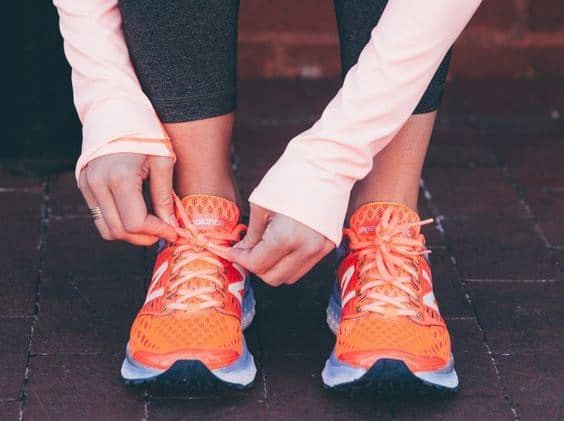
What is zero drop ?
The term “drop” in running shoes has nothing to do with the way your shoes drop from your feet as you stagger through your front door at the end of a brutal long run.
Rather, the term “drop” in this case is the common name for the heel-toe drop which is the measurement of how much higher the heel of a running shoe is relative to the toe area of the shoe. This measurement is always given in millimeters.
Therefore zero drop shoes are those shoes that have zero millimeters height difference between the heel and the toe. Once upon a time before shoe companies hired clever marketing people, we used to call these types of running shoes “flat”.

Difference between zero drop and minimalist?
The minimalist or barefoot running movement may not have created the book born to run, but it certainly thrust the concept into the mainstream.
As the name implies, minimalist or barefoot running involves the absolute minimum of shoe material between the sole of your foot and the ground. For this reason, minimalist running shoes tend to be zero-drop or very close to zero-drop.
The flip side of the equation does not hold true, however. All zero drop running shoes are most definitely not minimalist.
Where I run the trails are rocky and some fairly sharp rocks at that. I tried super minimalist shoes and had to slow down and keep looking at where my feet were landing to avoid getting bruised feet from sharp rocks. For that reason, I prefer a range of running shoes with varying amounts of cushioning depending on how severe the rocky terrain.
I am certainly not alone. By far, more cushioned zero drop shoes are sold than minimalist shoes. In fact, companies like Altra have built their brand awareness around the concept of zero drop maximalist running shoes.
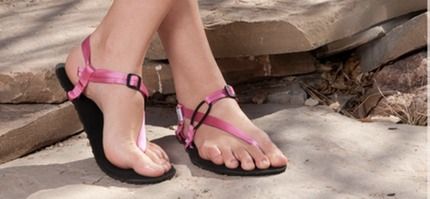
Range of motion of ankles and lower legs
Having a good range of motion through the ankle joint is key to maintaining a fluid and efficient stride pattern.
The trouble with shoes that have a higher heel-toe drop is that they
The restrictive impact does not end there either. At the office, women’s shoes and to a lesser extent men’s shoes all have heel-toe drops that are seldom less than three-quarters of an inch (10mm). If your work involves being on your feet a lot or for that matter a lot of walking, this will all add to the shortening of your heel/calf connective tissue.
Tightness and a restricted range of motion through the ankle area dramatically increases your risk of soft tissue over-use injuries such as plantar fasciitis and Achilles tendonitis.
I learned about my own range of motion issues in an unusual way. It was back when I was getting into triathlon training. My swim coach had me do some drills with the kickboard. My ankles were so tight that I couldn’t produce any thrust with the kickboard. In fact, as soon as I had lost the momentum from pushing away from the pool edge, I actually started going backward.
Not great when your swim kick drives you backward rather than forwards.

Improved Running economy
One aspect of the zero-drop adaptation is that as you gain flexibility and strength through your heel, Achilles, Soleus, calf chain, your foot strike becomes more stable and consistent. This, in turn, will give you a greater economy of movement.
And after all, an economy of movement becomes more and more important as run distance increases. If you make an improvement to your running economy, you will be able to cover the same distance at the same pace but using a lot less energy.
Another factor is that zero drop shoes promote an adaptation of your running style from landing on your heels to a more mid-foot foot strike. Landing on your heels and rolling across your foot to finish over your big toe is what you do when you walk, so it makes perfect sense that you will start running with this biomechanical habit.
This exaggerated heel action when you run is tantamount to digging your heel in as a braking system, killing your forward momentum. It also means that your overall body position is lower to the ground at the moment your foot makes contact. This gives you a kind of hill to climb up and over before you can start pushing forward to try and regain a little momentum until the next foot strike. Then you stop, climb up and over the stride all over again.
This realization together with the teachings in the book Born to Run lead to a massive shift toward a forefoot strike pattern in many runners. However, the dramatic switch from an exaggerated heel strike to and exaggerated forefoot strike often leads to frustration and injury as the pendulum swing is just too dramatic.
An interesting side note is the observation of top long distance triathlon coach Brett Sutton. Sutton states that it is not necessary to “convert” a heel striker to a forefoot runner. In fact, there are a number of elite and even champion triathletes at Ironman distance that are heel strikers.
What is important is to shift the area of contact to directly under the athlete’s center of mass or center of balance. This will allow you to use all your power/energy to drive your body forward rather than up and over a hill of your own making.
Injury risk
From my perspective, running injuries tend to be anchored in a lack of patience. When I first started to transition toward zero drop running shoes my calves would be on fire after just a short, low-intensity run. It was a good couple of weeks before I could start increasing volume or intensity. If I had done so too soon, there is no way I would have avoided injury.
A study published by Dr. Laurent Malisoux, et al, in February 2017 at the Luxembourg Institute of Health makes for interesting reading with regard to injury risk in relation to the heel-toe drop in running shoes.
The 553 participants were randomly divided into three groups as follows: 176 received 10mm drop shoes, 190 received 6mm drop shoes, and 187 received zero drop shoes.
The interesting outcome of the study relating to overall injury prevalence was that between 21% and 24% of participants from each group picked up an injury over the course of the six month study period. This is hardly the variance within such a small sample size that indicates that one shoe type is more or less injury causing.
Further questioning of the injured runners exposed a completely different injury causing factor. All of the injured runners, irrespective of shoe type had either been injured during the three months that preceded the study or had dramatically ramped up their run volume during the six months of the study.
While the study failed in its attempt to show any single shoe type had an impact on overall injury risk, injury location was by far the most telling outcome of the study. The injuries suffered by runners wearing 10mm drop shoes were mainly knee injuries. Conversely, the injuries suffered by runners wearing zero drop shoes were almost exclusively foot/Achilles injuries.
Foot protection
From my perspective, living where a major feature of the trail network is an excess of sharp rocks, foot protection is an important factor in shoe selection. I remember testing a pair of super light, soft, minimalist racing flats. By the time I got to the end if a simple 10k trail loop the soles of my feet were bruised to the extent that walking was difficult for two days and no running at all for five days. Not my idea of fun.
Your local trails may be a forested network of soft peaty soil. In that case, your super minimalist Vibrams or Vivobarefoot shoes will be just fine. Just know that they won’t stand you in good stead should you get up into the high mountains where you are running on snow and ice shattered rock.
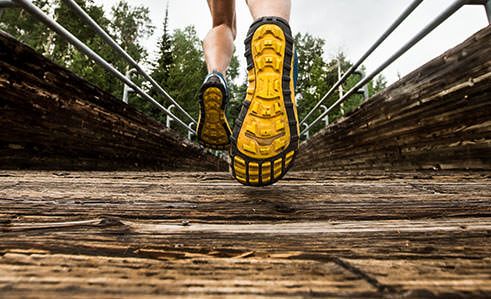
Plantar fasciitis and shoe choice
There is a very interesting anomaly that I have noticed in the seemingly bizarre relationship between shoe choice and foot injuries, plantar fasciitis in particular.
The Luxembourg Health Institute study of 2017 showed a higher propensity of foot and Achilles injuries among runners using zero drop shoes. This was not showing the full story, especially given that the study period was a mere six months.
All of the zero drop runners in the study that fell victim to plantar fasciitis during the study had already been struggling with the injury on and off for months and in some cases years. Most had been running in 12mm and 10mm drop shoes. The sudden change to zero drop shoes combined with increased run volume at the start of the study period caused a flare-up of what was already there.
As mentioned earlier, 12mm drop shoes (an equivalent of one-inch heels) promote a shortening and weakening of soft tissue through the foot/heel/calf chain. This shortening increases the risk of plantar fasciitis. Conversely, zero drop shoes promote the lengthening and strengthening of the same connective tissues.
The logical conclusion is that zero drop shoes should be ideal for you if you are at risk of or have a propensity for plantar fasciitis. Here is the rub if you pardon the pun. If you make the switch too dramatically or quickly, you will be almost guaranteed
Not the miracle fix everyone thinks
Runners looking to a pair or style of shoes as the miracle solution to all their running related issues seem to be missing the point. More often than not their problems are embedded within the biomechanics of their own running form.
Zero drop shoes will not automatically cure overstriding and landing well forward of your center of mass. Sure zero drop shoes will make it easier to run with better and more efficient form. You will still need to put in the work to correct the inefficiencies within your biomechanics.
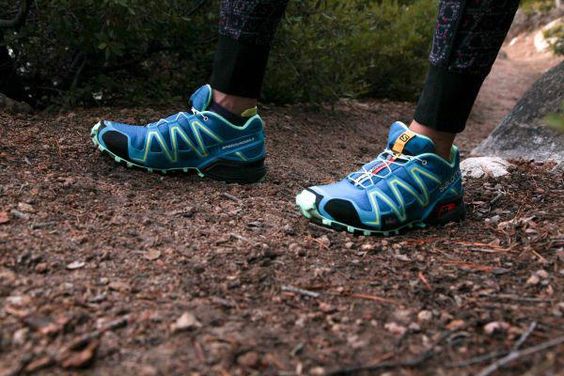
What do elite athletes do
Elite athletes are less fixated on getting themselves down to a zero drop shoe. It is entirely possible that their shoe sponsor won’t have a zero drop option for them to use. For them, it is ensuring that their foot strike is below their center of mass so that there is no loss of momentum.
Depending on end-of-season contract negotiations, there is a chance that they may have a different brand of shoes in the next season, with different cushioning and drop rate combinations.
Speaking to coaches of elite athletes the sense I get is that degrees of heel-
Put these runners into higher drop running shoes and you will even see them heel striking. This is simply because they are maintaining the same foot action through their stride as a rock-solid constant.
For instance, the Vaporfly 4% by Nike was designed for elite marathoners who normally race in near zero drop shoes. The Vaporfly combines the high stack height of shoes like the thinner Hokas with a very aggressive toe spring. Interestingly, the world’s allegedly fastest shoe has a heel/toe drop of 10mm. I found it a very unstable shoe to run in. Then again, it was designed for the marathon world record, not for a mid-pack runner like me.
Dangers of walking for zero drop transition
Beyond the very obvious casual observation that both running and walking incorporate legs and feet, that is where the similarity ends.
Walking involves an exaggerated heel strike and your foot contacting the ground in front of your center of mass rather than under it. In other words, walking more will not improve your running form.
Using walking as a tool to teach your body the biomechanics of running with zero drop shoes is similar to repeatedly throwing a ball with your right hand as a way to improve your ability to throw a ball with your left hand.
Furthermore, walking for an extended period of time in your zero drop shoes can cause a degree of sole compression under the heel area of your shoes.
This is in the same line that we are told never to walk in our running shoes extensively before the shoes have been retired from running. That is because walking creates different wear patterns on the shoes than running does. The wear pattern imbalance can potentially cause a running injury.
It seems ludicrous to me that one of the unwavering rules of preventing running shoe related injuries for decades is suddenly thrown out because we are now dealing with zero drop shoes.
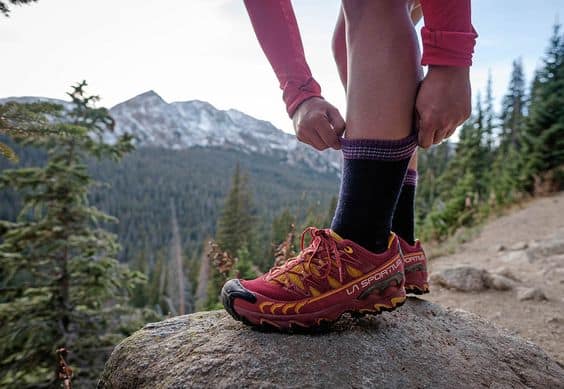
Progressive adaptation
Now that we have looked at all the ways you can get injured while making the transition to zero drop running shoes, let’s unpack in detail what does work time after time.
Running shoes with standard cushioning have a life span of between 300 miles and 500 miles. The more regularly the pair of running shoes is used the shorter the life span. That is why having two pairs of running shoes concurrently is a good strategy for extending the life span of each pair of running shoes.
With this in mind, here is how I transitioned to zero drop running shoes. My starting point was running shoes with a 12mm drop. When both of my pairs of 12mm drop shoes were in the 200 miles to 250 miles range I bought myself two pairs of 10mm drop shoes. At first, only one recovery run per week would be in the 10mm drop shoes. Slowly the run volume in the new shoes increased while the run volume in the old shoes decreased.
By the time my 12mm drop shoes were ready for retirement, my 10mm drop shoes were nudging closer to 250 miles each in their life span. So, spread across my four pairs of shoes in rotation, my transition from 12mm drop shoes to 10mm drop shoes was in the region of a thousand miles of running.
The transition from 10mm to 8mm drop shoes followed the same format, as did 8mm to 4mm, and 4mm to zero-drop. So in total, my process of transition from 12mm drop running shoes to zero drop running shoes lasted just short of four thousand miles. I understand that for many people this would represent years and years of running. I am on a multi-year, seven days a week run streak so those miles racked up quite quickly.
You may be running way fewer days with less volume. If that is the case then doing the blend across of only one pair of shoes in each heel/toe drop measurement will easily work for you.
Now that I have made the transition down to zero drop running shoes I am not running exclusively in zero drop shoes. While I do most of my running in zero drop shoes I currently have a pair of Hoka One One Bondi 5 shoes in my rotation that have a 4mm heel drop.
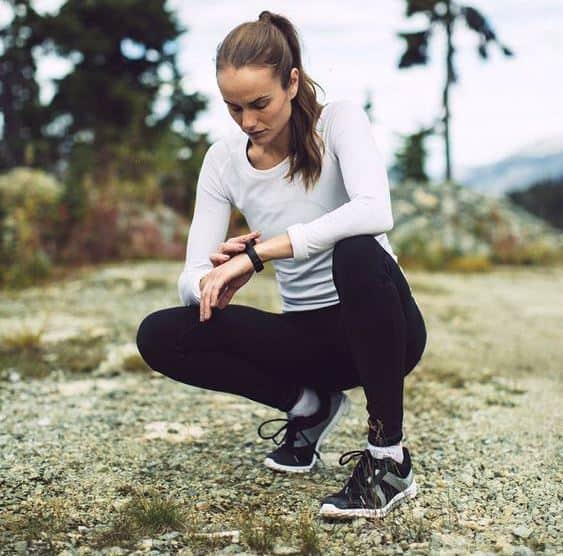
Racing during the transition period
The next interesting question raises its head. Say you decide to use my method for making the transition to zero drop running shoes. Depending on how much you already run, it is a process that could take months and in some cases years to complete.
The chances are highly likely that you will have one or many races come up during the transition period. This leaves you with a dilemma. Which shoes do you select for your race?
Once upon a time in the days of having a single pair of running shoes your decision was essentially made for you. Now not only do you have a selection between two or more pairs of running shoes you also need to choose between the older shoes with a higher heel drop or the newer and flatter running shoes.
The good news for you is that this problem has a very simple solution. There is a good chance that your newer and flatter running shoes will induce a little tightness in your lower leg when you run longer. This will be even worse when you start to really try and push the pace under race conditions.
Lower leg tightness will almost always slow you down, leaving you with a disappointing finishing time. In addition, racing with tight lower legs will mean longer post-race recovery time and more days away from running before you get back into training. Not ideal.
Therefore, use the shoe with the higher heel drop for your race and make the most of race day.
Related questions
How do I transition to barefoot running? The process to transition to barefoot running involves the same progressive adaptation used for the transition to zero heel drop running shoes. In addition, you need a program to toughen your feet so that you can withstand the rigors of barefoot running.
Are zero drop shoes good for plantar fasciitis? Having zero drop shoes will put you at low risk of developing plantar fasciitis. If you already have plantar fasciitis do not start the transition process to zero
Do zero drop shoes cause tight calves? Zero drop shoes cause more engagement of the calf muscle than shoes with a higher heel drop. Tight calves are common during the process of transitioning to zero drop shoes, but not for the long term.
